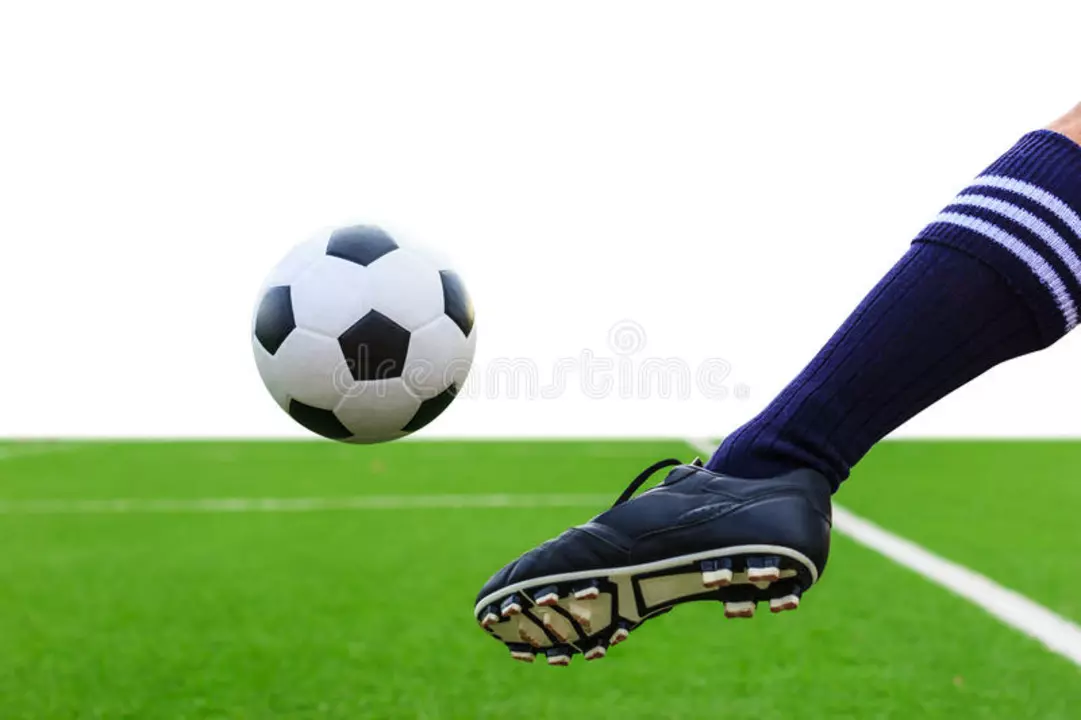Finding the Sweet Spot: Where to Strike the Ball
As a soccer player and a fan, I've always been interested in finding the perfect spot on the foot to strike the soccer ball for maximum control and power. It's a skill that can make or break a game, and if you're anything like me, you're probably always looking for ways to improve your technique. In this article, we'll be discussing the ideal part of the foot to strike the ball and how this can affect your game. So, let's get started!
Using the Inside of Your Foot for Accurate Passing
When it comes to passing the ball accurately, using the inside of your foot is the way to go. This part of the foot offers a larger, flatter surface to make contact with the ball, giving you more control and precision. To do this, position your foot so that the arch is in line with the center of the ball. Make sure your ankle is locked and your foot is angled slightly upwards. This will help you to maintain a strong connection with the ball and ensure it travels in the direction you want it to. Remember, practice makes perfect, so keep working on this technique until it becomes second nature.
Mastering the Outside of The Foot for Tricky Passes
Using the outside of your foot can be a great way to make deceptive passes and create space for your teammates. This technique requires a bit more skill and finesse than using the inside of your foot, but once you've mastered it, you'll be able to pull off some impressive moves on the field. To practice, start by positioning your foot so that the outside edge is in line with the center of the ball. As you make contact, twist your ankle outwards and follow through with your leg. This will help to generate spin on the ball, making it more difficult for your opponents to predict its trajectory.
Unleashing Power with the Laces
When it comes to shooting and striking the ball with power, the laces (or instep) of your foot are your best friend. This area provides a solid, flat surface which, when used correctly, can generate an incredible amount of force. To make the most of this technique, plant your non-kicking foot beside the ball and swing your kicking leg back. As you bring your foot forward, make sure your ankle is locked and your toes are pointed downwards. Connect with the ball using the laces of your foot and follow through with your leg to generate maximum power. Remember, accuracy is just as important as power, so take the time to practice this skill until you can consistently hit the target.
Adding Finesse with the Inside of the Toe
While it may not be the most common technique, using the inside of your toe can add an element of finesse to your game. This part of the foot allows for a quick flick of the ball, making it perfect for those tight spaces where you need to get a shot or pass off quickly. To practice this skill, position the inside of your toe in line with the center of the ball, and quickly flick your foot upwards. This will generate a quick, snappy movement that can catch your opponents off guard.
Chipping the Ball Using the Top of Your Foot
Chipping the ball is an essential skill for any soccer player, and it's one that can be achieved using the top of your foot. This technique allows you to lift the ball over your opponents, making it perfect for situations where you need to get the ball over a wall of defenders or into the path of a teammate. To master this skill, position your foot so that the top is in line with the bottom of the ball. As you make contact, lean back slightly and follow through with your leg, lifting the ball into the air. Remember, practice is key, so keep working on this technique until you can consistently achieve the desired height and distance.
Conclusion: Finding Your Personal Style
As we've seen, there are many different parts of the foot that can be used to strike a soccer ball, each with its own advantages and disadvantages. The key is to find the techniques that work best for your individual style and to practice them consistently. With enough dedication and hard work, you'll soon find that sweet spot on your foot that allows you to strike the ball with confidence, power, and precision. Good luck, and happy practicing!
